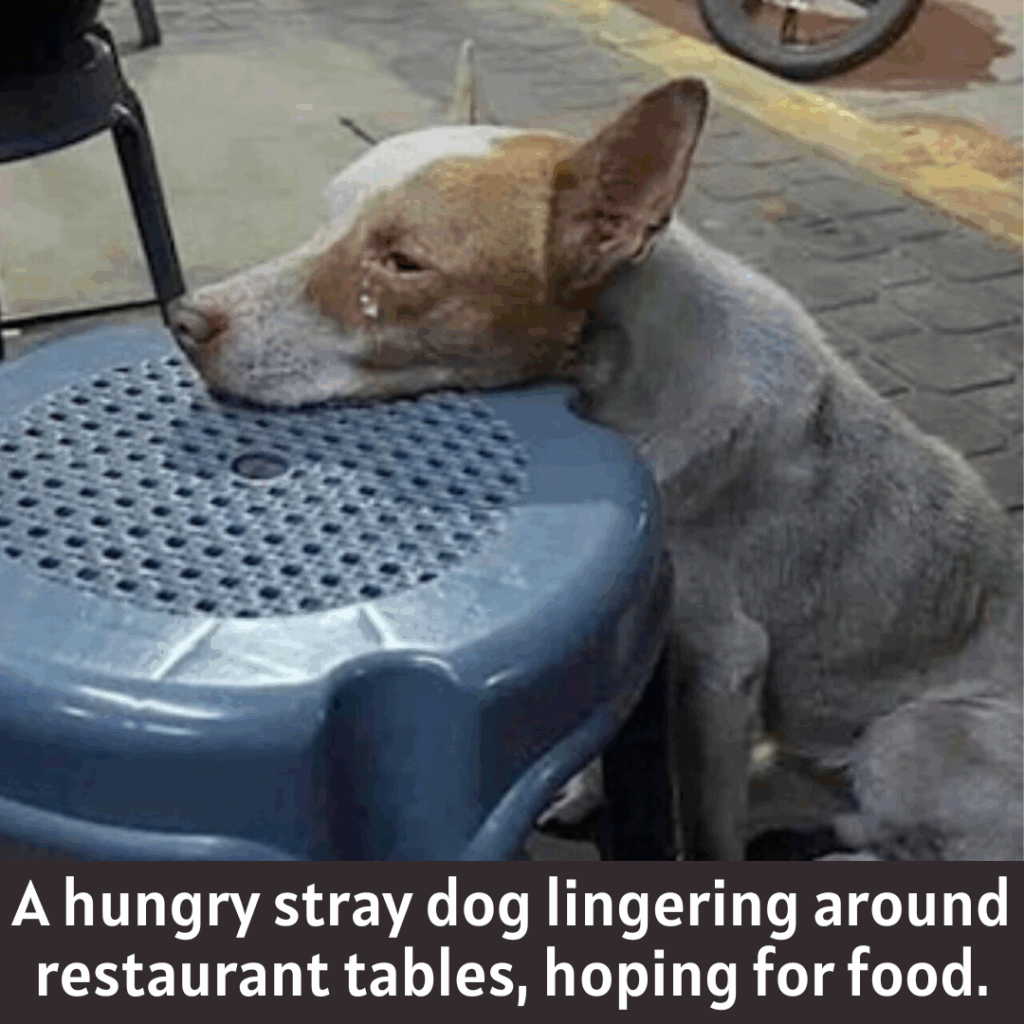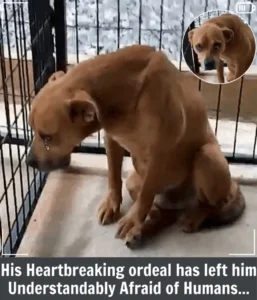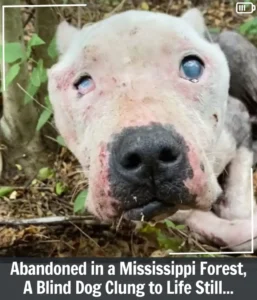A Glimpse Into the Heart of the Sstreets
It started with a single photograph.
A stray dog, gaunt and weary, rested his head gently on the edge of a restaurant chair. His ribs were showing, his fur was thin, and his eyes—those quiet, pleading eyes—seemed to hold a world of longing.
In that moment, he wasn’t barking or begging. He wasn’t causing a scene. He was simply… hoping.
The photo, shared on social media, spoke louder than any caption could. It showed more than hunger—it captured the soul of an animal who, despite being ignored by the world, still believed in kindness.
That one image was a mirror, forcing us to see what we often choose not to: that millions of stray dogs walk among us, quietly enduring, silently waiting for someone to care.
And for this one dog, someone finally did.
The Power of One Post
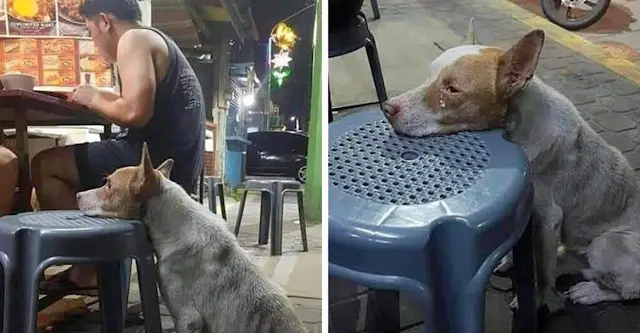
It was Twitter user @SuavesLomitos who first posted the image, along with a simple yet heartfelt description.
They recounted how the dog had been spotted near a restaurant, not begging aggressively, but patiently lingering—hoping for food, comfort, maybe just a moment of recognition.
The photo went viral almost instantly. Thousands shared and reshared it. But this wasn’t just a viral trend. It touched people. Deeply.
There was something hauntingly human in the way the dog leaned his head against the chair—subtle, gentle, almost apologetic. As if to say, “I won’t bother you. I just want to rest.”
And people noticed.
When Kindness Catches Fire
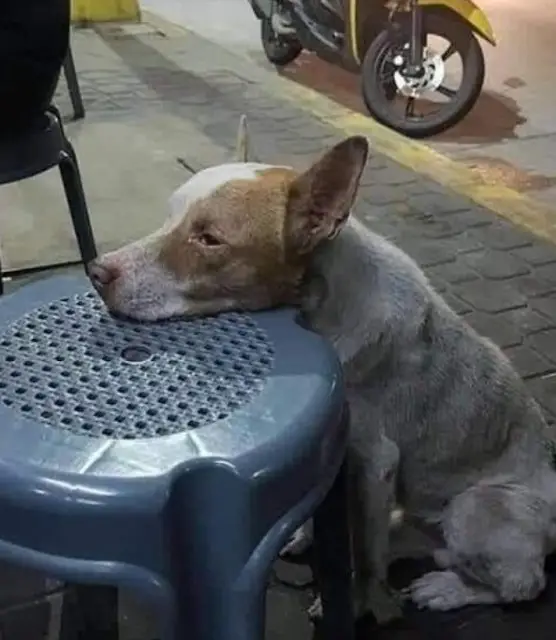
The response was immediate and overwhelming. Social media users from all over the world began commenting—not just with sympathy, but with stories.
They shared memories of feeding strays, leaving bowls of water by their gates, or carrying dog kibble in their bags just in case.
Some posted photos of their own rescued pets, once stray and forgotten, now curled up in soft beds. Others admitted they had never really considered the lives of street dogs—until now.
This one quiet image had opened thousands of eyes to a truth they had overlooked for years.
And suddenly, it wasn’t just about one dog anymore. It was about all of them.
Feeding Is More Than Food
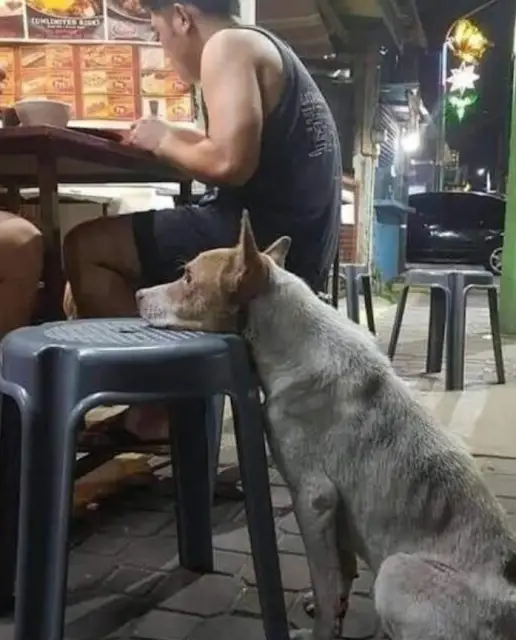
To many, giving food to a stray may seem like a small, fleeting gesture. But for that dog, it can mean everything.
It means relief from hunger, even if only for a day. It means a moment of safety, a reminder that not all humans turn away.
And perhaps, most importantly, it means visibility. Someone saw them. Someone cared.
But feeding goes deeper than that—it opens the door to empathy. It reminds us that these animals have feelings, fears, and dreams.
That they may not speak, but they communicate in the way they wait, the way they watch, the way they gently place their hope in strangers.
A Note of Care and Caution
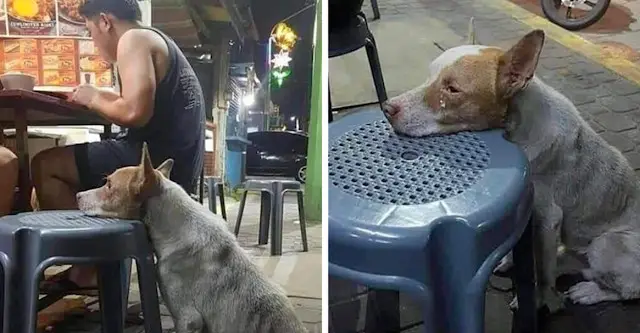
As more people became inspired to help, animal advocates stepped in with guidance. While the intention to feed strays is beautiful, how we feed them matters.
Many strays suffer from weak immune systems or sensitive stomachs due to malnourishment and exposure.
Feeding them spoiled food, cooked bones, or heavily seasoned scraps can cause more harm than good.
That’s why experts encouraged people to carry small bags of dry dog food or plain, cooked rice and chicken—simple, nourishing options that won’t upset their digestion.
The goal isn’t just to feed, but to heal—safely and sustainably.
The Dog Who Spoke Without Words
There was something about this particular dog—the way he didn’t demand anything, didn’t cause a fuss, just quietly waited. His body told a story of hardship, but his eyes held resilience.
He became more than a photo. He became a symbol.
A symbol of the stray curled up beneath a bench. Of the dog resting in the shadow of a street vendor’s cart.
Of the pup lying behind a dumpster, out of sight but still hoping.
That image made people look—and more importantly, it made them feel.
From Small Acts to a Big Movement
In the days and weeks that followed, a wave of compassion swept across social platforms. People pledged to do more.
Some began carrying extra kibble in their cars. Others set up feeding stations outside their homes or workplaces. A few even committed to fostering or adopting a stray.
What began as a moment of viral empathy became a movement of real-world action.
And that’s how change begins—not with massive gestures, but with small, consistent acts of care. One person sees. Another helps. A third joins in. And suddenly, a ripple becomes a wave.
Thinking Beyond the Meal
Feeding stray dogs is a beautiful first step. But the movement sparked by that one viral image also highlighted the need for long-term solutions.
Many street dogs were once pets—abandoned due to financial hardship, relocation, or plain neglect. They once had names. Beds. Families. And now, they dodge cars and sleep beneath broken buildings.
Supporting local shelters, spay/neuter programs, and rescue groups is essential. So is advocating for adoption over buying pets from breeders or pet shops.
Every stray deserves not just a meal, but a home—and it’s within our collective power to make that possible.
A Shared Responsibility
The stray dog in that photo could have been anywhere—in Thailand, Mexico, India, the U.S. The truth is, these animals exist in every corner of the world, often unnoticed, often unloved.
This story was more than a viral post—it was a wake-up call. It reminded us that compassion doesn’t need to be grand to be meaningful.
A handful of food. A bowl of water. A soft word. A shared story. These things matter.
We all have a role to play—whether it’s by feeding, fostering, adopting, donating, or simply spreading awareness. No act is too small when it comes to saving a life.
Final Thoughts: Compassion Is Contagious
That one photo—of a hungry dog resting his head on a restaurant chair—was not just a snapshot. It was a catalyst.
It showed the world what quiet suffering looks like. But it also showed what hope looks like when it’s met with kindness.
Let this be our reminder: when we choose to see the invisible, to hear the unheard, and to help the helpless, we don’t just change their lives—we change ours too.
So next time you see a stray dog waiting silently by the roadside, remember this story. And let your heart answer, “I see you.”
Because sometimes, the smallest act of compassion is the loudest message of love.
